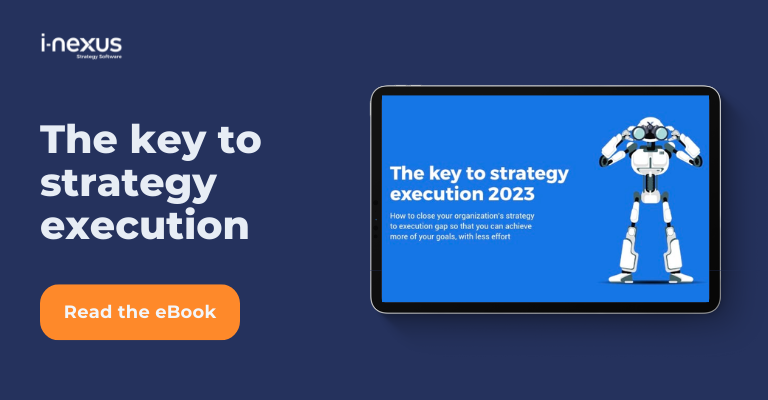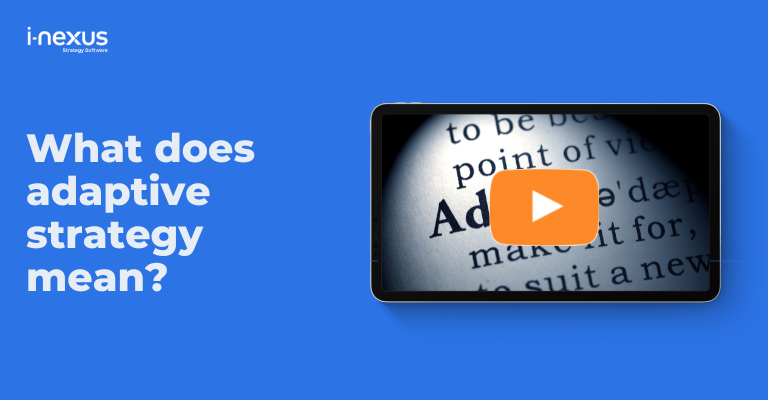How integrating your data and aligning people, process and systems can make your business information invaluable.
Written by: James Davies, Executive Vice President of Product
With data becoming ever more present in decision-making, what does your organization need to put in place in order to make data the foundation for commercial success?
The answer: consolidate your data sets and let the resulting integration of data to other enterprise systems generate alignment and collaboration across your organization. The consequences? Superior commercial performance at a strategic, transformative and operational level.
This is what you need to know about data fragmentation, getting buy-in for integrated information sets, and why a new approach to data can be your biggest strategy execution ally.
What is the difference between fragmented and integrated data?
When it comes to collating business data, whether your information sits in multiple repositories or one location is the crux of the fragmented and integrated issues.
What fragmented data is:
Live that data that has been disseminated and stored in multiple areas. Crucially, the data sets are disconnected.
What integrated data:
The collection and management of data from one location. Here, data sets are connected.
Why does this definition matter?
Data integration is core to organizations delivering on their strategic, transformational and operational goals.
For more, see IBM's André De Locht perfectly discusses data integration below.
Data integration explained
Why disconnected data proves troublesome
Most enterprises run a welter of databases, warehouses, marts and you-name-its, generating a blizzard of spreadsheets and reports.
Within each business unit, there are multiple independent data sources and repositories, providing effective local support.
But, without an over-arching view, opportunities at the group or company level can be missed.
For example, a retailer’s web site may capture the consumer’s name, address and sales history. This channel creates a powerful history usable for sales promotions and understanding customer behavior.
The company strategy may be directly affected by what it sees as changing trends in buyer patterns.
Yet the same consumer may buy different products in the store, because they want to try on clothes or check the quality of manufacture.
If the in-store point-of-sale system does not integrate with the web transaction history, valuable sales information is missing from the consumer profile.
The company believes it has two consumer types, whereas it has just one with two purchasing habits.
In this example scenario, clearly fragmented data proves troublesome.
The information gulf
Without connected data and information systems, the web and in-store data will tell different stories about who is buying what.
To return to a Walmart example from before, Hurricane Frances threatened to hit Florida in 2004. Savvy Walmart made use of its commercial data to appropriately support the Floridian populous.
However, looking closer at the issue of information connectivity, non-integrated data sets could have produced conflicting results.
The web sales reports could say flashlights were the highest pre-hurricane seller, while the retail stores could say Pop Tarts were the big sellers.
Why? Because you typically buy manufactured goods on the web and food at the store.
The same basic situation applies across business units for so many organizations. Take these typical units (or think of how many exist in your company):
- Sales,
- Marketing,
- Finance,
- Production,
- Distribution,
- Logistics etc.
All of these may be operating from their own version of the truth and as a result tell different stories.
Answering data questions depends on the who and what
Answers to data questions will change depending on who you ask, and the data in use.
Where data is disconnected, it is easy to find the corporate strategy difficult or even impossible to execute.
That's because the corporate strategy will be based on an aggregate of data misaligned with the business units.
Lines of business managers will act based on their own localized data, and if the data is different the actions may no longer align with the strategy.
To generate value from their data initiatives, organizations must take decisive steps to resolve the issue of data fragmentation.
That begins with gaining buy-in from the business units to start using the new connected processes.
Moving toward connected data - aligning people, operations, execution and strategy
All the tools now exist to turn your data dream into reality.
Where before it was costly or complex to deploy central master data systems, mature cloud services can replace physically isolated or in-scalable systems.
1) Cost-effective use of data for insight
It is possible to move terabyte-scale data to cloud services without business interruption (e.g. WANdisco technology).
Likewise, your business can deploy huge compute power for very short periods using services such as Amazon Web Services, Google Cloud Platform and Microsoft Azure.
These techniques bring enterprise-wide data storage and super-size analytics within the grasp of even modest budgets.
2) Ease of integration
Similarly, the software itself has largely moved out of the IT department and become configurable and usable by non-technical executives.
Managers previously hooked onto spreadsheets soon become familiar with accessing online dashboards and interrogating live data. This comes with no need to understand how the underlying infrastructure actually works.
As a side note: do you understand how Amazon, Google, Netflix, or WhatsApp work? Do you even need to know? Business apps are going the same way: we’re only interested in the result, and that means simple, powerful interfaces with no technical skill required.
3) Perception is reality
The “start small, move fast” mantra for data-driven decision-making even has an addendum: “and don’t break things”.
The fastest way to build a data-driven culture and move towards integrated data sets is to enable it without breaking existing processes.
If people see that the new offering produces better results, or makes life easier, the old ways of working will wither on the vine.
What's next?
i-nexus can help you establish an enterprise-class strategy execution platform that will help drive a culture of continuous innovation and improvement.
Click here to visit our Strategy Execution Management knowledge hub, filled with content to support you in embracing the 'no normal' of strategy in the 2020s and beyond, or explore these recommendations:
- Data-driven decision-making: Choosing gut instinct vs. data: How can you exploit your data-driven decision-making to enhance your business' performance?
- The Key to Strategy Execution: Uncover the benefits of excellent strategy execution, the organizations who have succeeded, and how your business can follow suit.
About the author
James Davies is i-nexus’ Executive Vice President of Product. As an experienced software executive with 20 years of experience working in Silicon Valley, USA, James has held senior leadership roles in three venture capital backed software start-ups (including CEO, CPO and Chairman) and has delivered management consulting services to some of the world’s largest technology companies.
If you’d like to talk more about the future of strategy execution, reach out to him on james.davies@i-nexus.com or connect with James on LinkedIn for the latest strategy execution insights.




